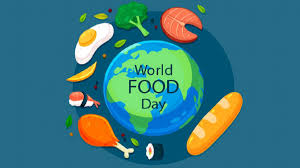By Irudhaya Jothi
Bankura, Oct 16, 2024: The World Food Day, celebrated every year on October 16, marks the founding of the United Nations Food and Agriculture Organization (FAO) in 1945.
The theme for this year, “Right to Food for a Better Life and a Better Future,” calls attention to the urgent need to ensure food security and dignity for all. It serves as an occasion to reflect on India’s current status regarding food security and explore ways to realize the right to food as a fundamental right for every citizen.
The persistent challenge of hunger in India
India’s Global Hunger Index 2024 ranking, at 105 out of 127 countries, raises serious concerns. Despite some marginal improvements in child nutrition and mortality rates since 2016, the overall Prevalence of Undernutrition (PoU) has worsened. According to FAO estimates, the PoU has increased from 11.5 percent in 2016 to 13.7 percent. This alarming rise reflects unequal food access and broader economic challenges.
The high levels of child malnutrition — with 35 percent of children stunted (low height for age) and 19 percent wasted (low weight for height), as reported in the National Family Health Survey-5 (2019-2021) — paint a grim picture.
These figures reflect more than just insufficient food. They point to poor dietary diversity, food insecurity at the household level, inadequate maternal and childcare services, and the low status of women in society, compounded by poor health infrastructure and sanitation.
Food Security Efforts: Progress and Shortcomings
The Public Distribution System (PDS) and the National Food Security Act (NFSA) have helped expand the safety net over the past decade. Free grains provided under the PDS have played an important role in ensuring basic cereal consumption for many households, especially during difficult economic times. However, food security remains precarious due to high unemployment, stagnant rural wages, low farm incomes, and rising retail food prices.
Despite some progress, an estimated 100 million people remain excluded from free grain entitlements due to outdated population figures from the 2011 Census still being used to calculate beneficiaries. The Supreme Court has repeatedly directed the government to use projected population data to address these exclusions, but these orders have not yet been implemented. Similarly, millions of unorganized sector workers registered on the eShram portal are still without ration cards, despite the court’s intervention.
On October 4, the Supreme Court issued a final warning to the central and state governments, demanding compliance with its earlier directives on issuing ration cards. Failure to do so will result in the summoning of relevant food department officials to explain the non-compliance. This situation highlights the urgency of addressing administrative gaps to ensure that every citizen’s right to food is upheld.
Broadening the Food Rights for Nutritional Security
While cereal distribution remains the focus of food policy, a narrow view of food security fails to meet the nutritional needs of the population. The Right to Food Campaign and other activists have long demanded that pulses, edible oils, and millets be added to the PDS to provide balanced nutrition. The rising prices of essential items such as dal, oil, vegetables, and fruits have made it increasingly difficult for households to afford a healthy diet.
The State of Food Insecurity (SoFI) 2024 report estimates that 55 percent of Indians cannot afford a nutritious diet. The link between food prices, affordability, and minimum wages must be acknowledged. Wages under the Mahatma Gandhi National Rural Employment Guarantee Act (MGNREGA) and other employment programs must account for inflation to ensure that people can afford nutritious food.
Children’s nutrition programs like the Mid-Day Meal (MDM) scheme and Anganwadi services also need urgent attention. These programs are not currently indexed to inflation, and budget allocations under POSHAN 2.0 and Saksham Anganwadi schemes have declined in real terms.
Although the 2023-2024 budget allocated 254.49 billion rupees, a 6 percent increase over the previous year, this is still inadequate to address rising food prices and ensure the delivery of nutritious meals to children and women.
Towards a Comprehensive Right to Food
The right to food is more than just access to grains—it must ensure access to nutritious, diverse, and affordable food for all.
On the occasion of World Food Day, we, the Right to Food Campaign call for urgent steps to strengthen food security in India.
The demands include:
• Expanding the PDS system to include pulses, edible oils, and millets.
• Increasing resources for school meal programs and Anganwadi services, ensuring they account for inflation and provide nutritious food such as eggs, milk, and fruits.
• Ensuring every eligible citizen has access to ration cards, including those registered on the eShram portal and other vulnerable populations.
• Setting minimum wages based on the cost of a nutritious diet to make healthy food accessible for all.
Food security is a fundamental right that goes beyond filling stomachs—it is about ensuring dignity and life for every individual. As India observes World Food Day 2024, it must acknowledge the harsh realities of hunger and rethink food policies to address inequality, affordability, and access.
The right to food and nutrition should be a central objective of governance. With stronger policies, better implementation, and an inclusive approach, India can ensure that every citizen enjoys the right to a healthy, dignified life.
On this occasion, we are reminded that a future of food security and well-being is not just a policy goal but a moral imperative—one that demands urgent action for a better life and a better future for all.
(Jesuit Father Irudhaya Jothi is a Food Rights and human rights activist currently working among tribal children in a remote village in Bankura District, West Bengal.)











